For the last few years, I’ve been working to increase the health and vigor of a stewartia bonsai. As of this year, the tree is strong enough for regular spring maintenance – cutback and leaf pruning.
As you can see in the photo below, the tree’s large leaves shade out the interior branches. If I don’t prune now, I can expect some of the interior growth to die back.
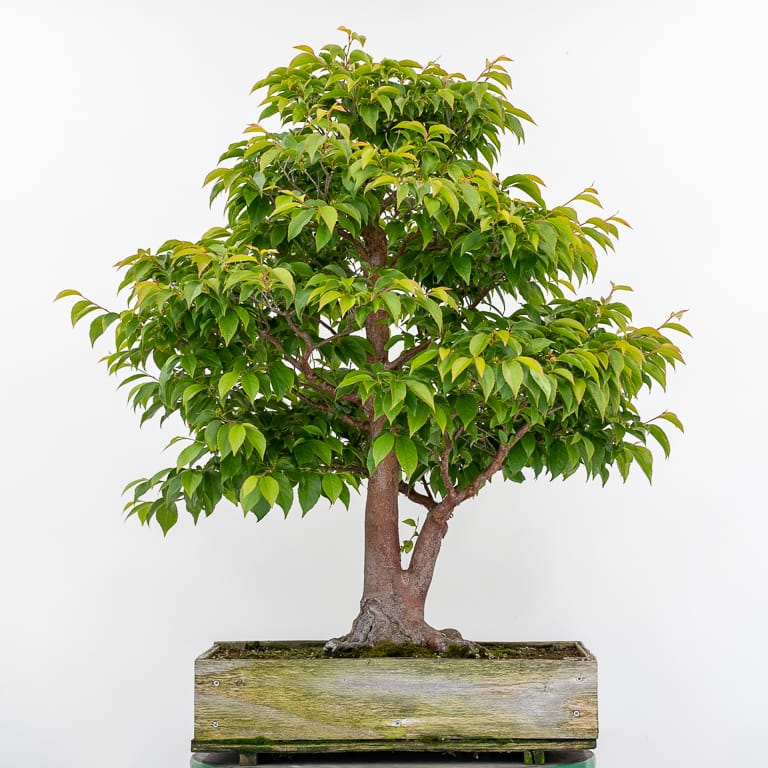
Stewartia
I’ll thin the tree in three steps. First, I’ll remove the leaves that don’t have buds. Next, I’ll shorten the spring growth back to two or three new buds. Finally, I’ll reduce the size of the larger leaves by cutting them in half.
How do I know the tree is strong enough for this work? There are two clear signs. The spring shoots are long – at least 5-6 new leaves in most places, and there are a number of new shoots emerging from older branches in the tree’s interior.

New shoots in the tree’s interior
As for the pruning, here’s the approach I took.
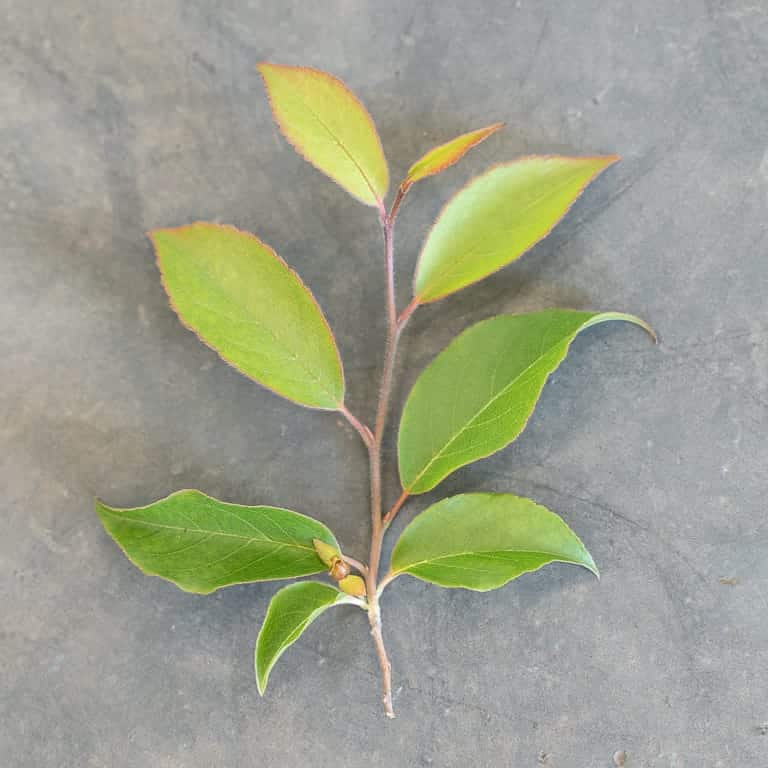
Stewartia branch
I started by removing any leaves that don’t have buds at the base of the petiole. On stewartia, it’s common for the bottom one, two, or three leaves to lack viable leaf buds.
If I want to end up with two or three leaves on each branch to let in as much light as possible, it does me no good to keep leaves without buds as they won’t produce new shoots after cutback.
Unfortunately the tree’s flower buds develop next to these leaves so I cut most of them off too.
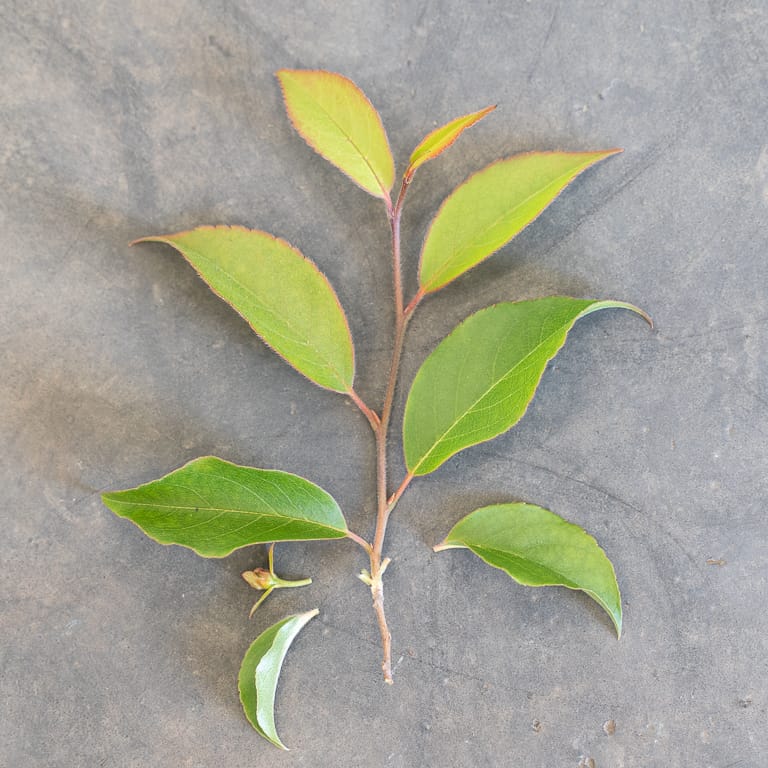
After removing the leaves without buds and a future flower
I then shortened most of the branches on the tree. In most cases I left two leaves, but I left three on some of the lower branches.

After shortening a branch to three leaves
Here’s the tree after thinning.
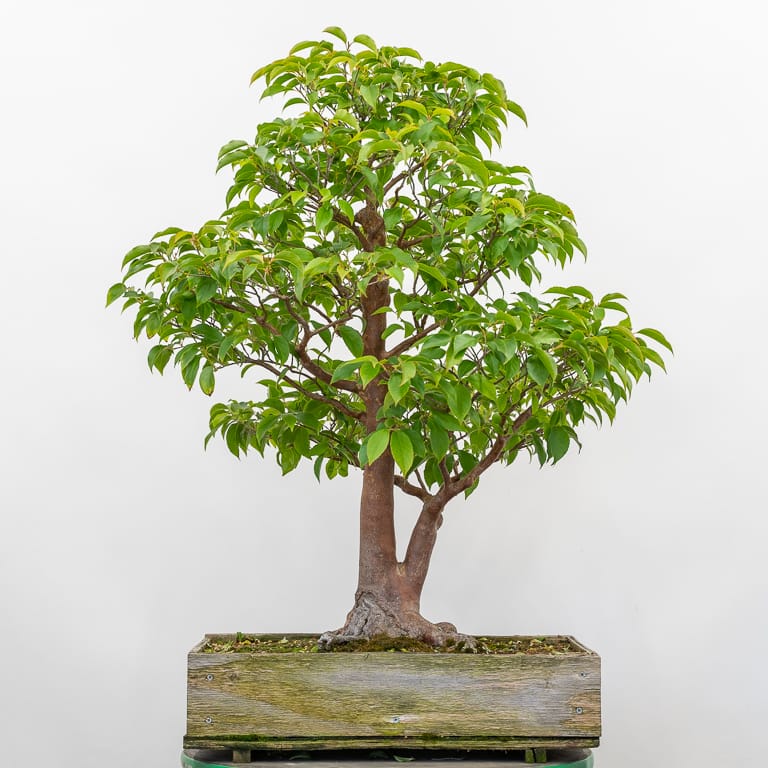
Cutback complete
The next step was reducing the leaf size. See “Leaf pruning stewartia” for details about how to do this.
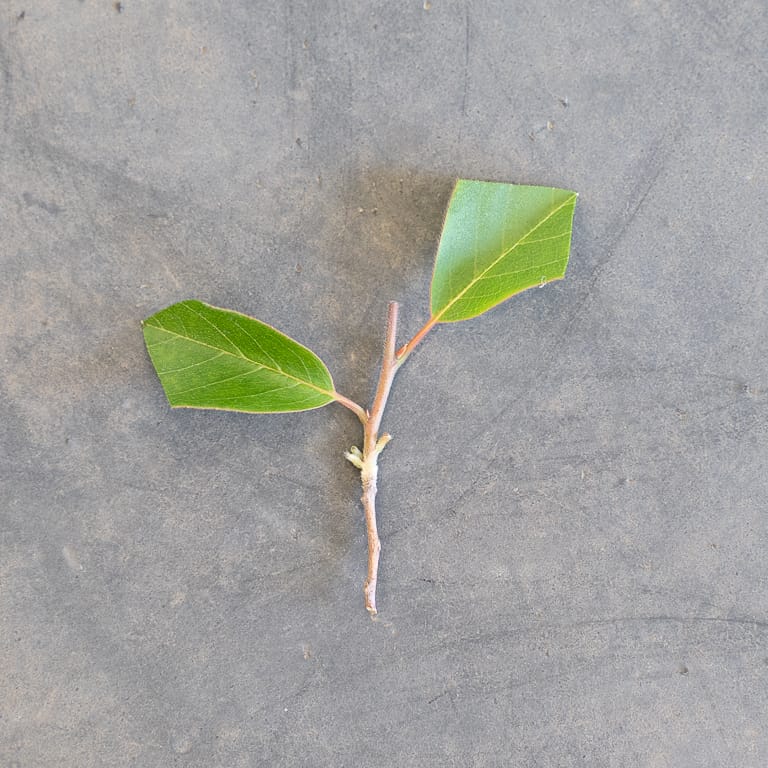
After leaf pruning
When I’d finished with the leaves, I took a few minutes to brush away the flaky bark that develops on stewartia to reveal more of the copper-colored trunk below.
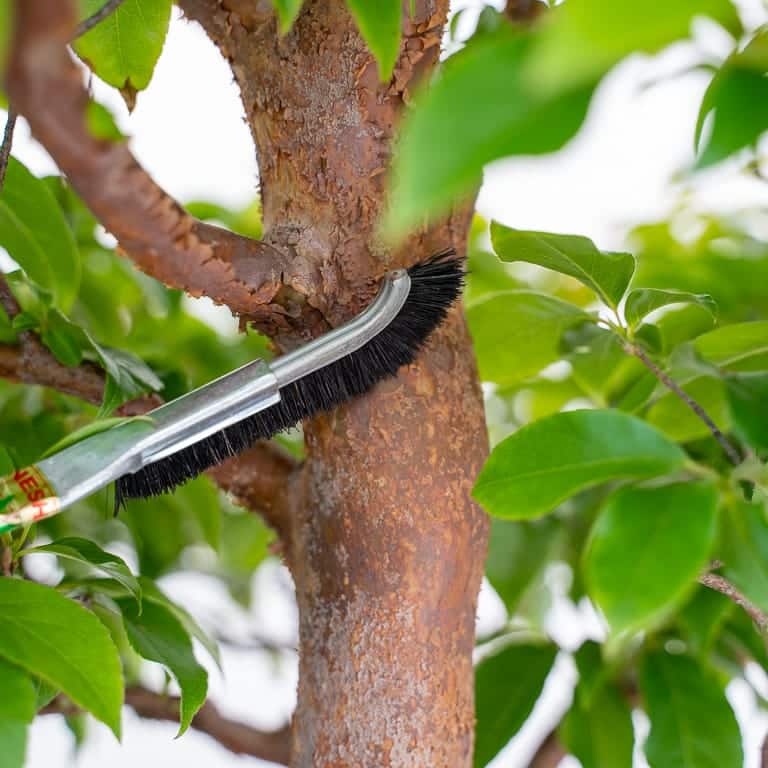
Brushing away flaky bark
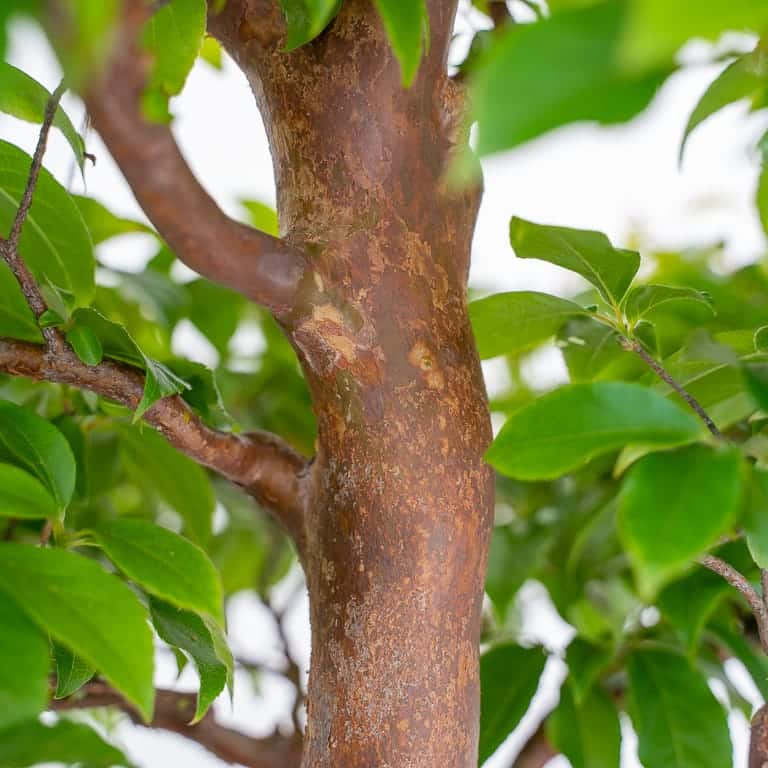
After cleaning the trunk
Here’s what the tree looked like when thinning and leaf pruning was complete. As you can see, it will now be easy for sunlight to reach the tree’s interior.
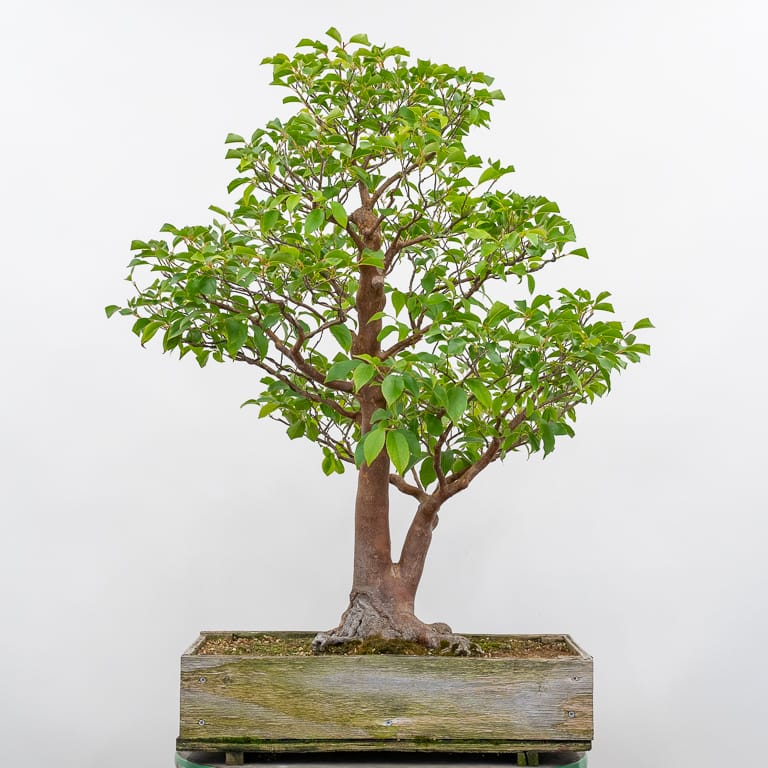
After cutback, thinning, and leaf pruning – 34″ tall
I plan to let the tree grow freely for the next few months and will look to prune again in fall.
Video Consultations Now Available
Have questions about your trees? Schedule an appointment to discuss strategies for improving your bonsai. Learn more about Bonsai Tonight’s Video Consulting.
English-language consultations are available worldwide.
Subscribe to Bonsai Tonight
New Posts Delivered Every Tuesday and Friday
Doug Zeeff says
Thanks for an excellent article Jonas. Would this method also be good for American Elm and Winged Elm.? The weather here in North Carolina must have been perfect for native trees because I have exceptionally thick growth on my Elms. I am afraid that by the end of summer I will have problems with the inner branches if I don’t do something. These are pre-prebonsai that are in grow boxes to grow out the trunks,
Jonas Dupuich says
Thanks, Doug! I think the process would be similar for American elm, though I haven’t worked with them. I’d just want to make sure they’re strong before reducing the new shoots or cutting leaves. Winged elms can grow quite vigorously and can be pruned similarly. If the leaves are already small, there will be no need to reduce the leaf size.
Keith Jarvis says
Jonas, great as usual. We’d love to see a closeup of the shari at the base of the trunk, and hear any backstory about that and/or your plans for dealing with it.
Jonas Dupuich says
Thanks, Keith! I don’t think I’ve posted a close-up of the shari so I’ll have to do that in a future post. I’m currently planning to graft roots on the tree in a year or two – am preparing the scions now. The brief version of the story behind the shari is that the tree had dried out or been overly root-pruned before I acquired it.
Zack Clayton says
I am looking forward to the preparation process and article on root grafting.
Jonas Dupuich says
Thanks, Zack – whether it’s the stewartia or another tree, I’ll try to do something with root grafts next year.